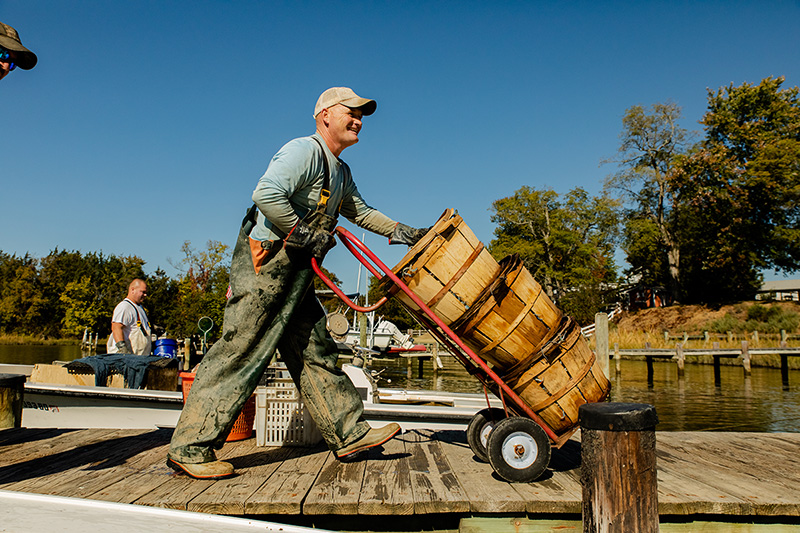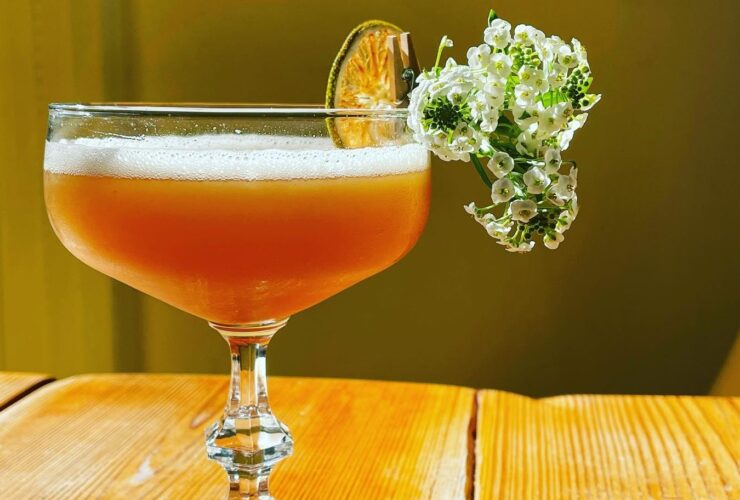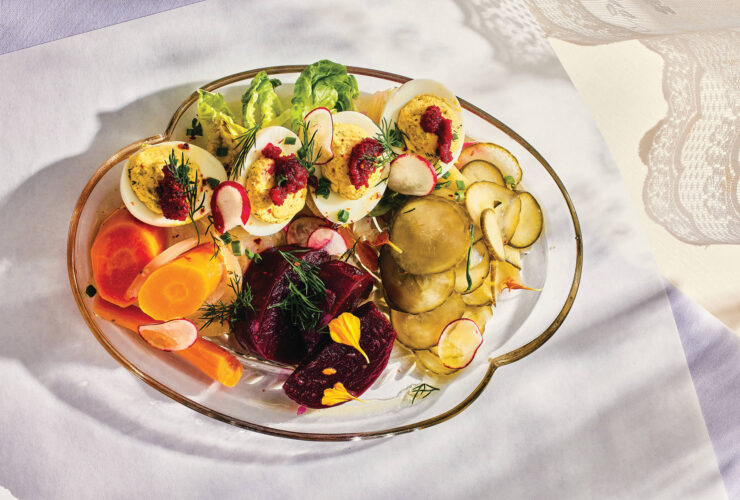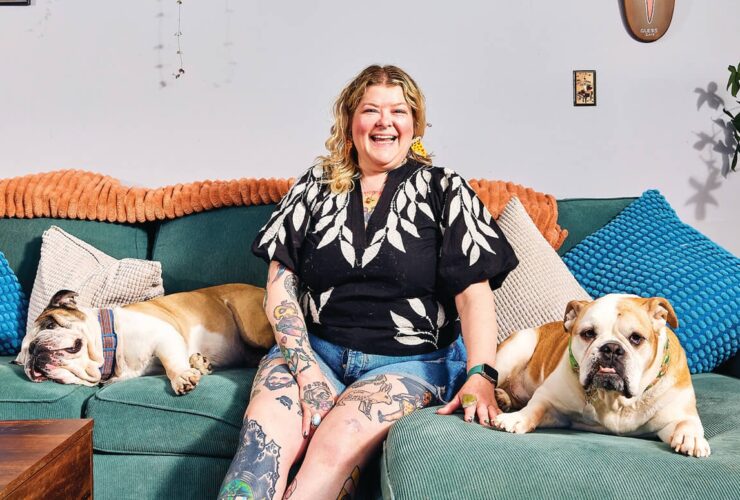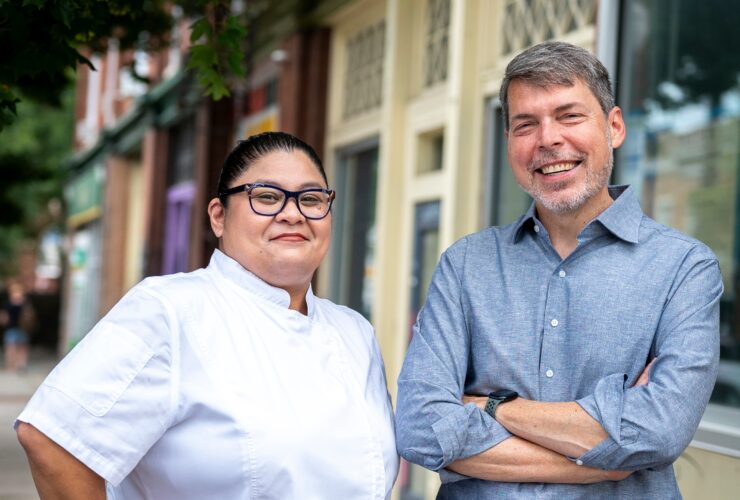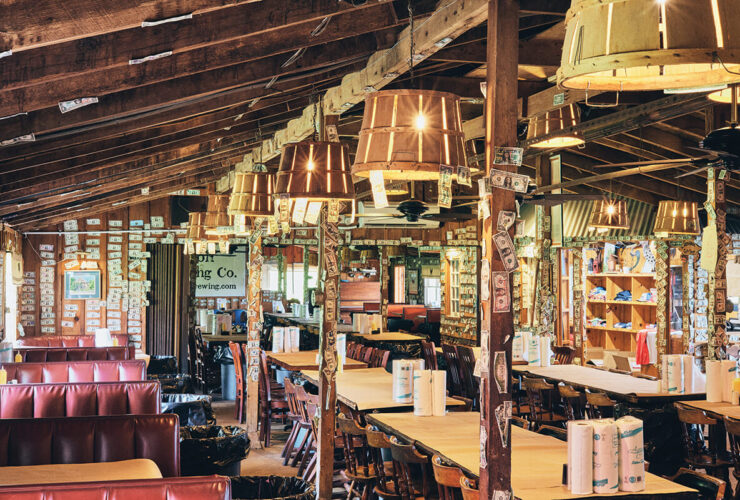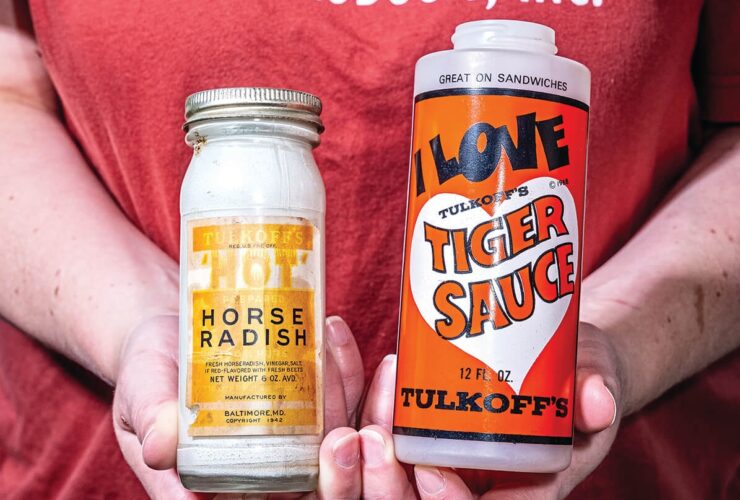
Travel & Outdoors
Crab Country
An insatiable quest on the Chesapeake Bay.
Just before sun up,
Billy Rice sets out on the water that he’s known all of his life. On this cool October morning in 2019, it’s like glass—calm and clear, catching the reflection of the full moon as he cuts fast across Piccowaxen Creek, riding the swells and around the shallows that lead him to the wide, majestic Potomac River.
A V of Canada geese floats in the twilight sky. An osprey nest sits empty. A duck blind waits for its winter brush. The sun, just beginning to seep over the horizon, casts orange light like some distant fire along the silhouette shoreline.
This is autumn on the Chesapeake, and for a little while longer, crab season.
“This was all I ever wanted to do,” says Rice, 65, who sold his first haul at the age of 10 and became a full-time waterman after graduating high school. Now, with his ballcap backwards and flannel tucked into olive green bibs, he’s headed out toward his nearly 500 crab pots—galvanized wire cages dropped to the river bottom, attached to a rust-red buoy that bobs on the brackish tide.
By a quarter past seven, he slows the boat, sets it in neutral, and hooks his first line over the hydraulic puller, the pot rising through some 20 feet of water. He grabs, unlatches, and, with a swift shake, empties it, as a half-dozen crabs are sent clacking into the culling box. He refills the bait trap with razor clams, splashes the cage overboard, and continues on his course—west to east, east to west along the Potomac—the boat engine purring as the dawn burns off into a bright blue day.
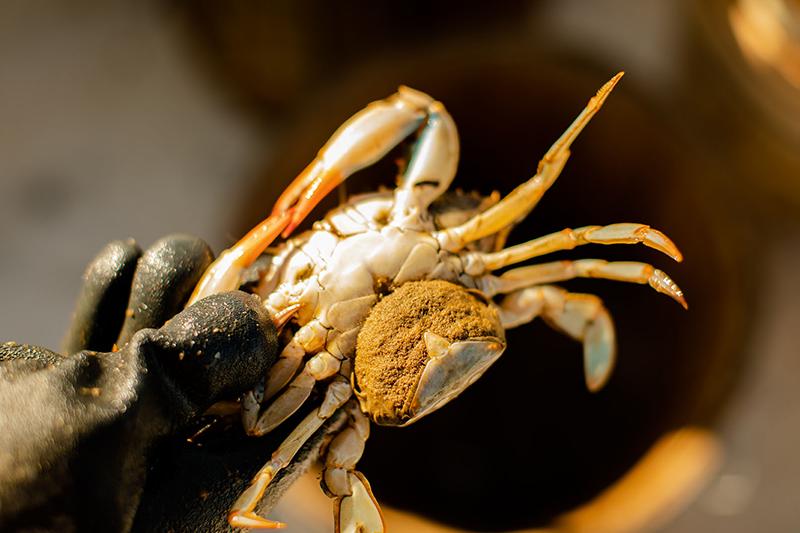
♦ An egg-bearing female crab, also known as a “sponge crab.”
At one point, Rice holds an unlikely catch into the air—a wriggling female crab, or sook, whose orange belly bears some two million eggs that she’ll carry more than 100 miles to the edge of the Atlantic Ocean—before gently tossing her back into the waves. “With care,” he says. “Those are worth more to me out here.”
By lunchtime, some 15 bushel baskets will be packed over the brim, full of hundreds of Maryland blue crabs—named for their cerulean limbs—that survived the summer but are now bound for market this evening. The others that evaded his pots will soon be hunkered down for winter, literally burying into the sand or mud, and Rice, like so many other Chesapeake watermen, including his 44-year-old son Rocky, will move on to other species, all the while counting the days till spring.
“There aren’t as many as there used to be, but crabs are such variable creatures, controlled so much by the water,” says Rice, his slight Southern drawl lilting out across its surface as he steers home. “When you learn about their life cycles, every one of them is something like a miracle.”
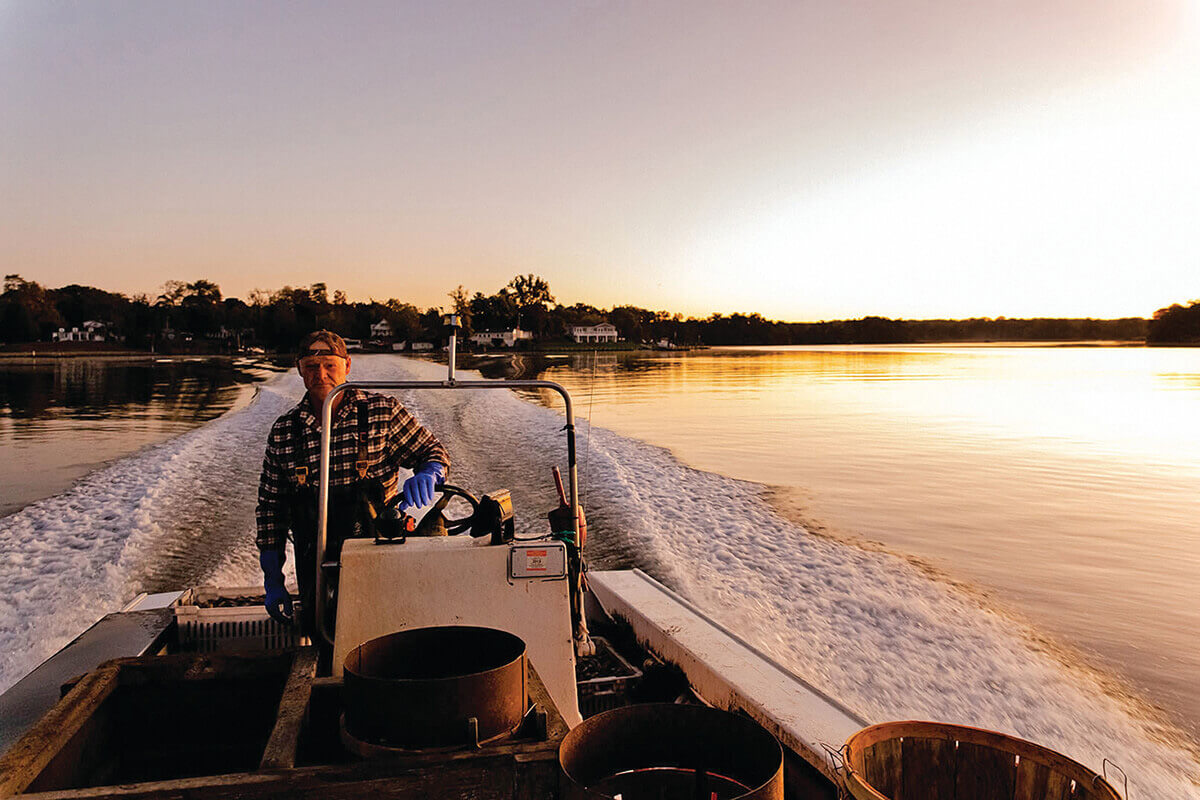
This is autumn on the Chesapeake, and for a little while longer, crab season.
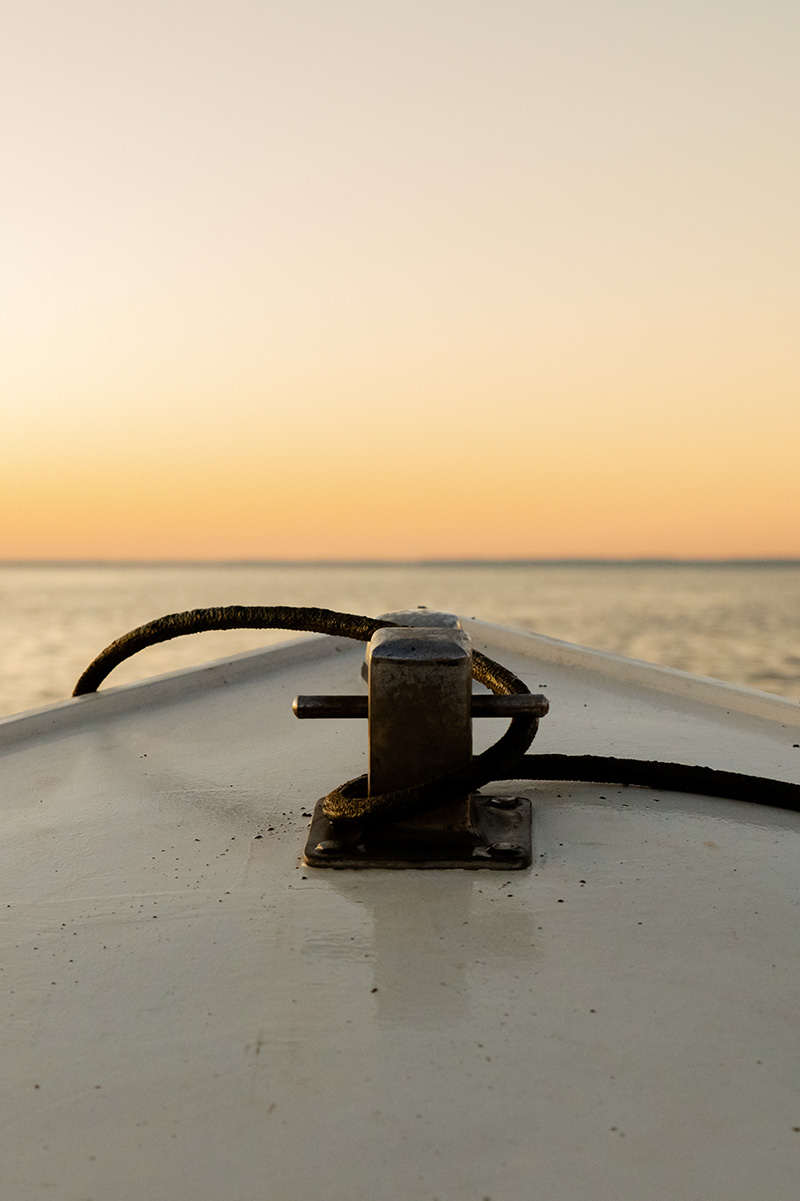
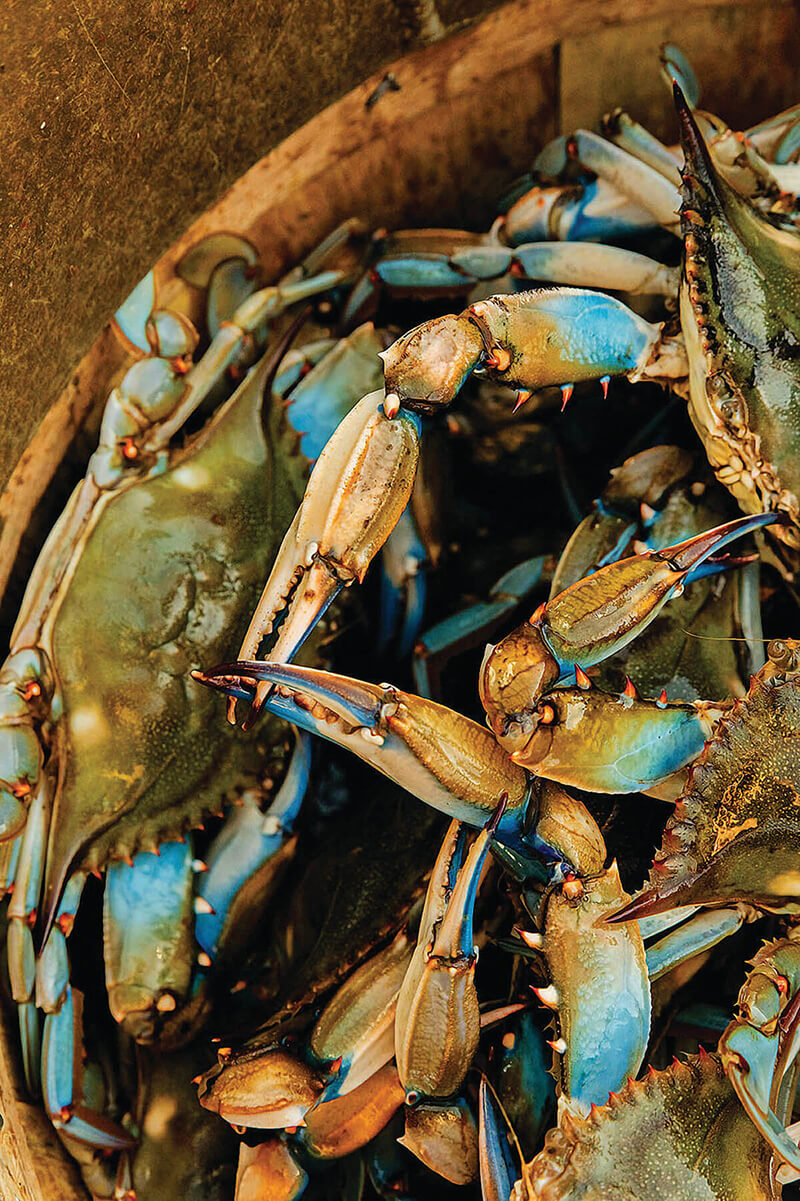
♦ Rice on the water, October 2019; sunrise on the Potomac; the trademark blue of Callinectes sapidus.
A s the crow flies, a Maryland blue crab’s life begins more than 100 miles south of Baltimore. Across state lines into Virginia, the microscopic larvae of the callinectes sapidus—“beautiful, savory swimmer” in Greek and Latin—are released into the open water at the mouth of the Chesapeake Bay. There, they drift on currents into the Atlantic Ocean, where they feed and grow for weeks to months, eventually returning to morph into juveniles and, at a mere two and a half millimeters, begin their great migration up the continent’s largest estuary. A trip that would take a sailboat several days.
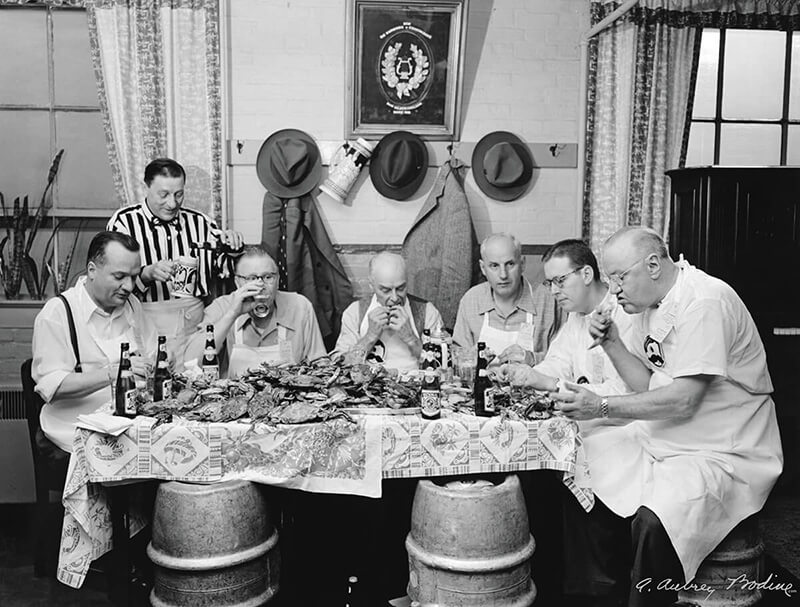
♦ A crab
feast at the Eichenkranz
Restaurant in Highlandtown, c. 1954, A. Aubrey Bodine.
But slowly and surely, they make their way up the bay, heading toward its increasingly fresh and shallow tributaries, even into the flats of the Susquehanna River. They scavenge for food—small fish, oysters, clams, even other crabs—and molt their shells multiple times, reaching sexual maturity the following year. After an elaborate mating ritual, the males, known as jimmies, move on to other mates, while the females once again head south, only to repeat the ancient cycle that still stumps experts to this day.
“I’m going to tell you what—I’d have better luck giving you the Powerball numbers than predicting what crabs are going to do,” says Blair Baltus, 62, a retired Essex crabber and president of the Baltimore County Waterman’s Association. “I can guarantee you three things: they swim, they bite, and they taste good. They magically appear every year, and they magically disappear. What kept me out there, you ask? Probably chasing them.”
That mysterious thrill is perhaps one of the reasons why we’re so captivated by the blue crab on a bay brimming with marine life. While they exist as far north as Nova Scotia and south as Argentina, it is only from April to December (though the season largely ends by Halloween) that we can catch Maryland’s most iconic species in our own state waters. Even then, there are countless factors—biological, environmental, economic, political—that influence whether they ever make it to our table at all.
Like Rice says, a miracle. And he and the other 5,400 Maryland watermen recognized on the state seal are part of that long tradition of trying to understand their wants and ways.
Crabs have always been synonymous with life along the Chesapeake—Algonquian for “at a big river,” with archaeologists finding remnants of crab feasts from both Native Americans and early colonists. “I well recall the time when prime hard crabs [were] hawked in Hollins Street of summer mornings at 10 cents a dozen,” wrote H.L. Mencken of his childhood in the 1880s. But it wasn’t until the 20th century that they crawled their way to the top of the heap.
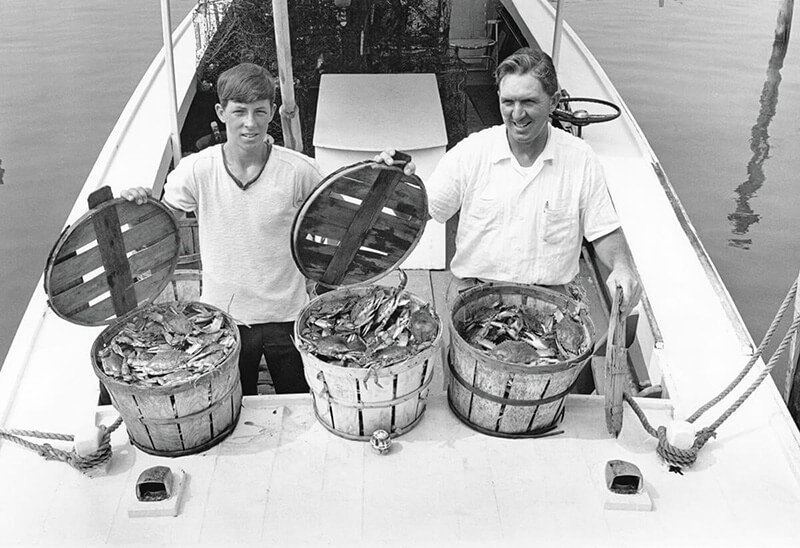
♦ A morning haul, c. 1968, Bodine.
Contrary to popular belief, blue crabs weren't always king on the Chesapeake, instead historically outshined by other species. But by 1980, the shad industry had shuttered, the oyster beds were decimated by disease, and the rockfish, rattled by overfishing and pollution, were headed toward a moratorium. The invention of the modern-day crab pot during World War II had already set the shift in motion, and before long, the blue crab would become the most valuable fishery on the Chesapeake, designated our state crustacean in 1989.
“Crabs were always popular in Baltimore, but back in the day, crabbing was really just something to do when you weren’t oystering or fishing,” says Baltus. “Since then, the demand has skyrocketed. I’d say at least 50 percent of the big rigs in Baltimore County now own their own crab houses. They wanted to get in on it, too.”
In Maryland, the commercial blue crab harvest is now worth more than three times that of oysters and rockfish combined, with some 34 million pounds harvested in 2019, at a dockside value of more than $56 million. As of press time, a bushel of males exceeded $300, while a pound of meat peaked at $50—driven in part by the coronavirus pandemic, during which local consumers flocked for carry-out crabs as a source of comfort.
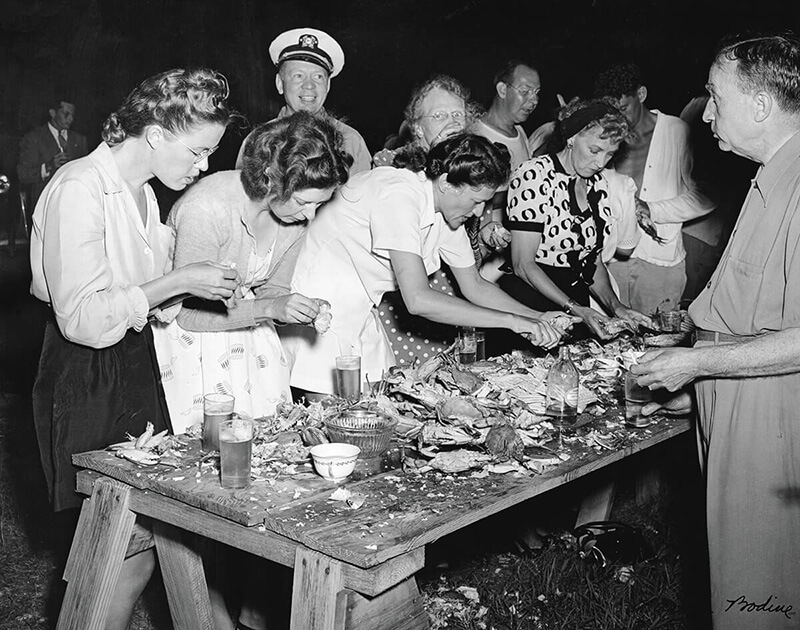
♦ A crab feast, c. 1946, Bodine.
In uncertain times, it’s no surprise that’s where we’d spend our money. After all, this is the place where Old Bay goes on everything— French fries, potato chips, ice cream (though the locals know: J.O. Spice). Where brown paper trumps white tablecloths. Where a feast only means one thing, and it’s happening in your own backyard.
“I eat them once a week, sometimes a whole dozen,” says Rice of his prized catch. “Of course, if they’re going for good money, I’ll sell them and buy a steak.”
“Crabs were always popular in Baltimore, but back in the day, crabbing was really just something to do when you weren't oystering or fishing.”
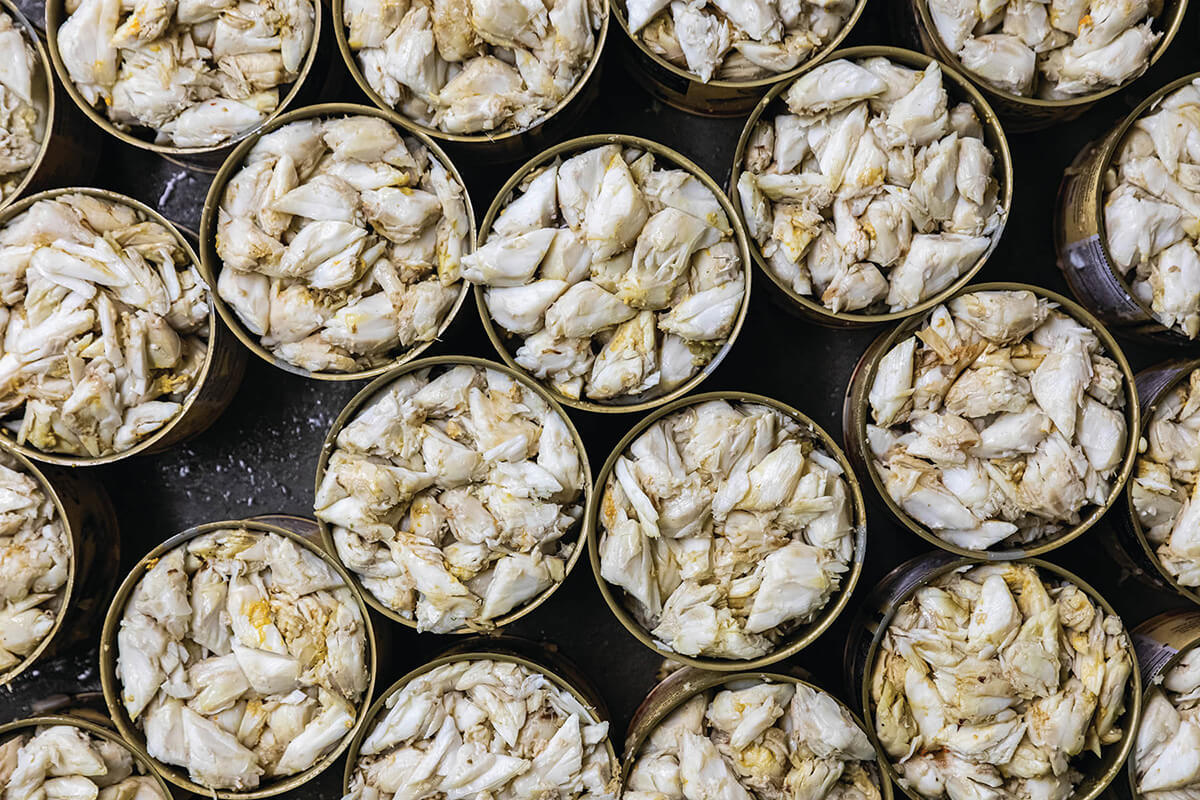
♦ Cans of Maryland
jumbo lump at J.M. Clayton.
I f you’re trying to understand just how insatiable the appetite has become for Chesapeake Bay blue crabs, look no further than Dorchester County on Maryland’s Eastern Shore. Here, past teetering stacks of crab pots and hand-painted signs that read LIVE CRABS, stand some of the last crab picking houses, the most famous of which might be right off Route 50 on the way to Ocean City—the J.M. Clayton Company.
Steam hisses out of its old cinderblock building on the Choptank River in Cambridge—shades of the once-bustling working waterfront now occupied by condominiums and the occasional cruise ship. The county’s other eight main picking houses reside on Hoopers Island, a remote archipelago located a half-hour south past the Blackwater National Wildlife Refuge, where inky marsh sinks into the bay.
“A lot’s changed,” says Jack Brooks, who runs the fifth-generation business with his two brothers and son. “This was once the center of commerce. Now we’re the only seafood place left.”
But much as it always has been, every morning during the Maryland crab season, watermen arrive at the dock and offload their harvest, which is sorted, steamed, and cooled before eventually being pushed through swinging doors into the fluorescent light of the picking room—the heartbeat of this operation.
Inside, the air is filled with the briny scent of seafood and a medley of sounds—metal stools moving across a concrete floor, the clatter of discarded shells, Spanish music on the stereo. Dozens of Hispanic women line stainless steel tables piled high with now-red blue crabs, their eyes focused, their knives like a sixth digit, as they swiftly remove the crustacean’s meat in a matter of mere seconds. For Consuelo Martinez, 47, who has been here for more than two decades, it takes just about 20.
“It’s easy,” she says, cleanly swiping every ounce of jumbo lump and backfin out of an intricate shell before moving on to the next one, oftentimes without even looking.
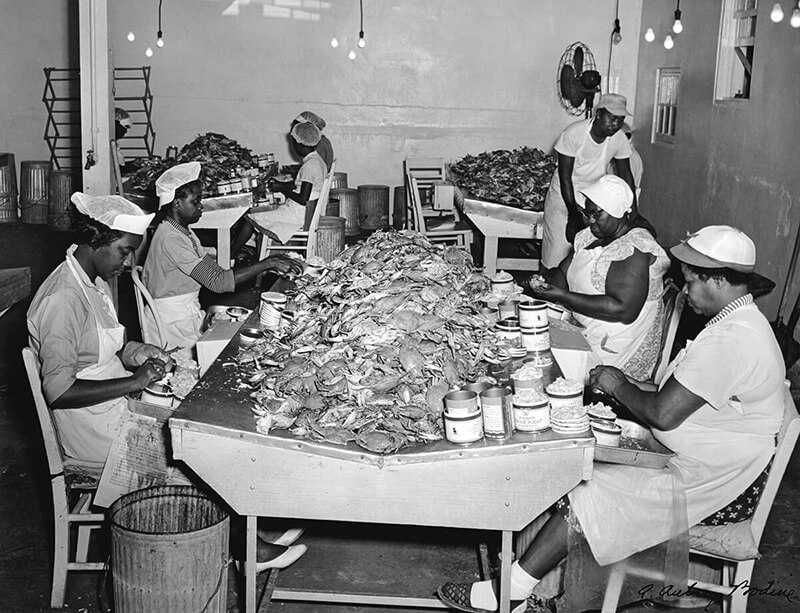
♦ Crisfield crab
pickers, c. 1950, Bodine.
Like the majority of the men and women at J.M. Clayton, Martinez arrived here from Mexico through the federal H-2B visa program, which helps employers hire migrant workers for seasonal jobs. Seafood picking houses were once staffed by a local, largely Black, female workforce, with their skills passed down through generations. Before the first Bay Bridge was built in 1952, these tidewater communities carved industries out of their isolation, but as times changed, so did their labor, with residents moving to larger towns in search of more stable work. In 1980, there were dozens of picking houses in Crisfield alone, where fading murals still declare it “the crab capital of the world.” Today, only one stands.
“Not many parents are raising their kids to be the best crab picker anymore,” says Brooks, noting that other local picking houses were forced to close after refusing to hire foreign labor. “We’d love to have local workers, but unfortunately, they’re just not here.”
Not that they don’t try to find them. The picking houses take out classifieds, hire temp agencies, and host job fairs, with J.M. Clayton once trucking a bus to Baltimore to lure folks to the shore.
But picking crabs can be a thankless job—starting at 5 a.m., Martinez helps moves about 2,000 pounds of meat a day during the season’s height, paid by the pound or hour, whichever ends up being more—and the work isn’t year-round.
Even still, the H-2B program comes with its own uncertainties. Using its lottery system, five of those nine main picking houses failed to receive seasonal workers this spring, shut out in part by the landscaping, construction, and hospitality industries that vie for the same 66,000 visas. J.M. Clayton was one of the unlucky ones, starting off the season with only a quarter of its normal workforce.
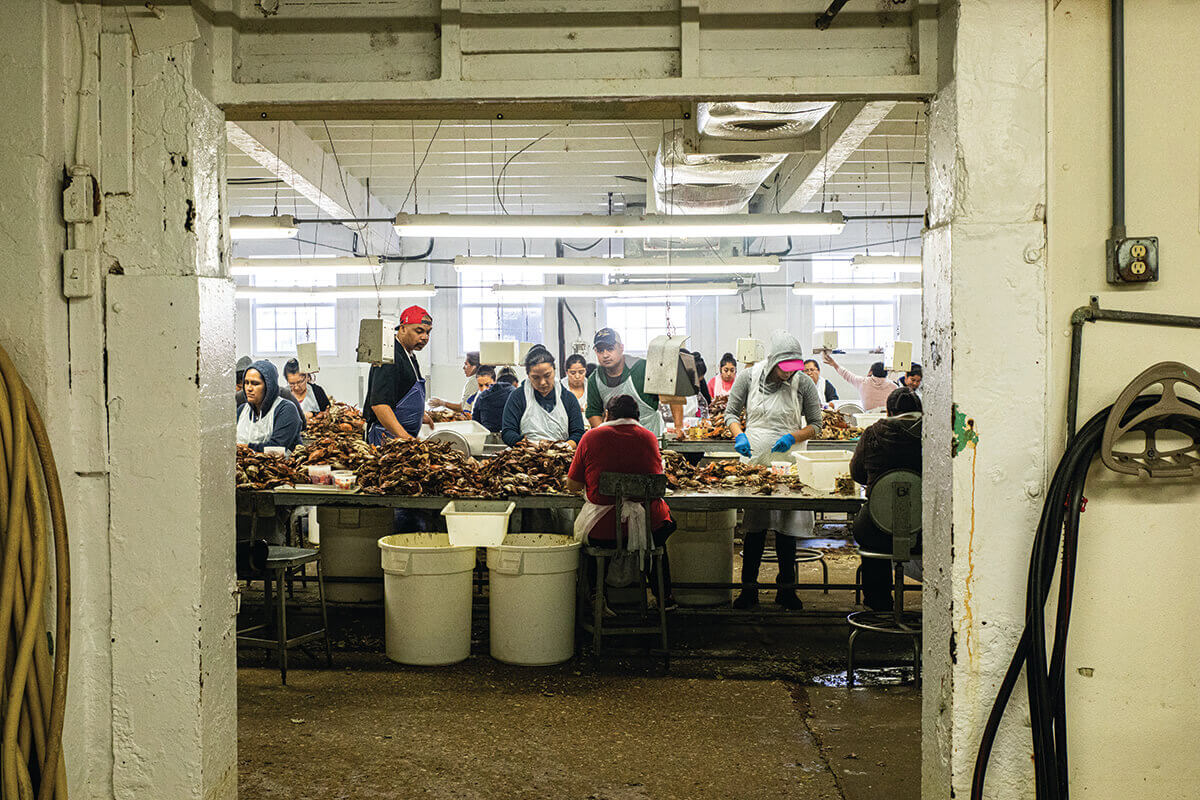
♦ The picking room at J.M. Clayton, October 2019.
Brooks hopes that Congress might eventually exempt seafood from the visa cap or offer exceptions for returning workers. He points to recent studies by the University of Maryland and Maryland Department of Agriculture, which found that without H-2B visas, the state’s economy would lose upward of $150 million annually, and that each temporary employee in turn supports over two and a half American jobs—from the watermen to the truck drivers to the restaurants.
“I tell folks, if you have some line on all of these people who want these jobs, please, send them to me,” says Aubrey Vincent of Lindy’s Seafood, a second-generation picking house in Fishing Creek that was also shut out this spring. “The visas are now an essential part of our industry.”
Part of that is due to the year-round demand for blue crab, not just from Marylanders, but the entire country, and beyond. There are now Phillips Seafoods in six major airports, and “Maryland-style” crab cakes sold on menus from Connecticut to Colorado and California.
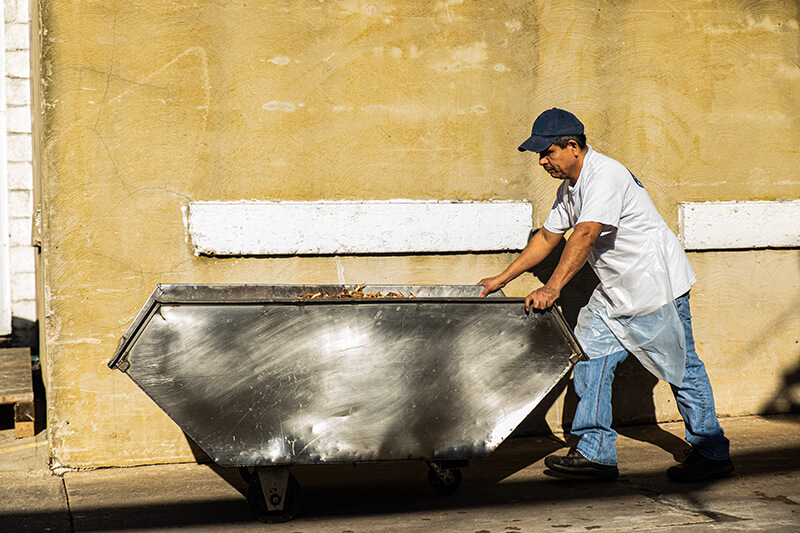
♦ Freshly steamed crabs.
Vincent sells upward of $10 million in seafood each year, some 90 percent of which is blue crab, primarily to restaurants and retailers through wholesalers like J.J. McDonnell in Elkridge, whose towering warehouses suggest through their sheer size just how much the market has grown. Some of the meat her workers picked this morning was in the Tangier Sound yesterday, will be shipped across the bridge tonight, and could land on a Baltimore menu tomorrow.
It’s impossible to keep up, and as such, no Maryland picking house relies on Maryland crab alone. Vincent sources blue crab from throughout the Chesapeake Bay, including Virginia, as well as into Delaware, and then, when need be, farther south down the Eastern Seaboard—the Carolinas, Louisiana—working with some 100 American watermen.
This is the recipe for survival in the 21st-century crab business, as well as a sustainable fishery.
“If we were just to rely on what came out of these waters, we’d devastate the Chesapeake Bay in no time—it’d be every last crab,” says Chris Phelps, seafood buyer at J.J. McDonnell, speaking to the delicate balance of supply and demand when dealing with a limited natural resource. “We’re talking literally tons and tons of crab meat are put onto our trucks each day.”
The hard shells of all-you-can-eat feasts still hail from the U.S., as crabs can’t survive out of water long enough to travel farther distances, but the same can’t be said for crab meat. Since the 1990s, the domestic market has confronted increasing competition from international imports. Around the clock, pounds of meat from the same blue crab, as well as an entirely different species, move fresh, frozen, or pasteurized by the plane or boatload from the likes of Venezuela, Colombia, Indonesia, China, Vietnam, the Philippines, and so on. It is estimated that more than 80 percent of our seafood is imported, so there’s a decent chance that the luscious lump garnishing your bloody Mary, swimming in your crab dip, even at the base of your Maryland crab soup, is not from North America, let alone the Chesapeake.
“It’s all the way around the world, and the market is only growing,” says Phelps, noting the ripple effects of COVID’s closed crab plants abroad and disrupted global supply chains, only compounding a scarcity of crab. “We’re at record-high prices, by a long shot. And I expect it to only get worse.”
“If we were just to rely on what came out of these waters, we'd devastate the chesapeake bay in no time—it'd be every crab.
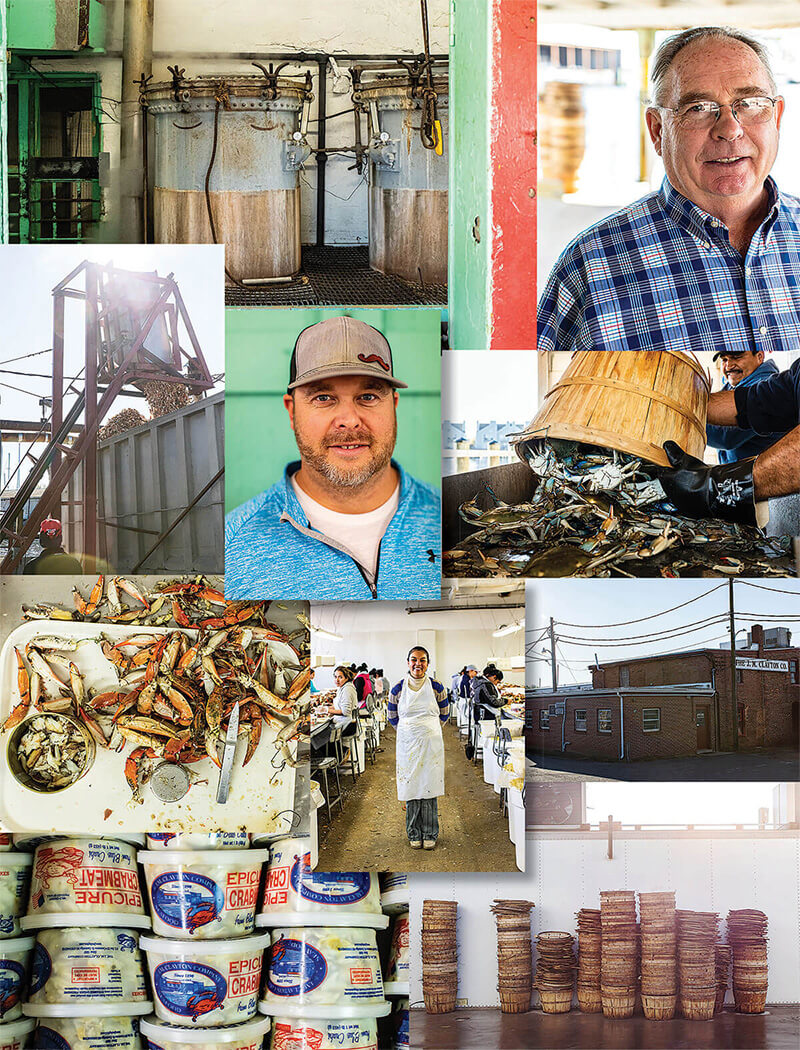
♦ Clockwise from top, left: Scenes from J.M. Clayton: crab
steamers; Jack Brooks; a fresh catch; the main
office; stacked bushel baskets; pounds of blue
crab meat; claws to be cracked; empty shells; Jack's son,
Clay; Martinez.
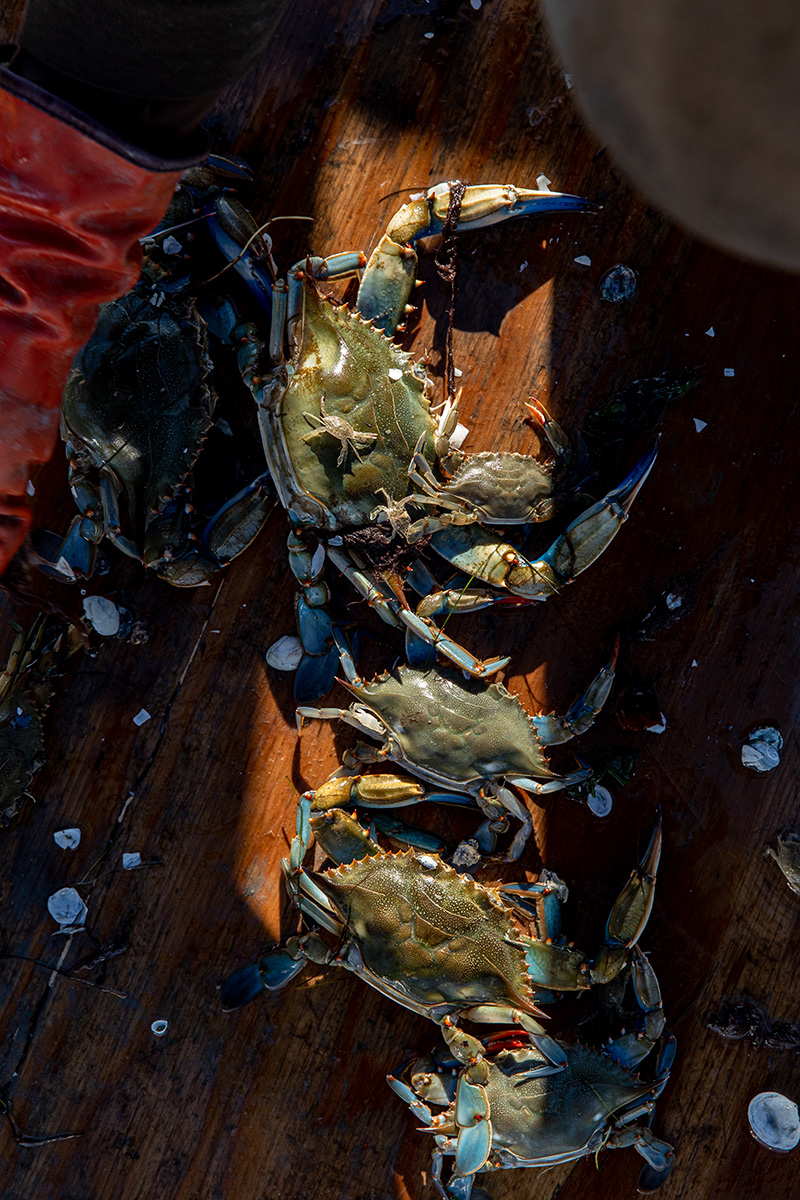
♦ Crabs of all sizes.
O f course, at the end of the day, Mother Nature still has the last word. Ocean weather can sweep crab larvae out to sea before they even make it up the Chesapeake. Water salinity, impacted by precipitation, can influence crab migrations, while habitat, namely underwater grasses, which ebb and flow with water quality, is key for crab growth and reproduction. Pollution remains a constant problem, and at every corner, there are predators, from blue catfish to blue heron to human hands.
This May, local watermen lamented that mild spring temperatures were keeping the crabs at bay in Maryland, as the cold-blooded crustaceans often wait to emerge from their winter slumbers until the water exceeds 50 degrees Fahrenheit.
Around that same time, the Maryland Department of Natural Resources announced that the Chesapeake Bay blue crab population fell by 30 percent this year, driven largely by the lowest number of juveniles since records began in 1989. Adult males were also well below their long-term average, though there was a slight increase in females—still far from their target.
“It definitely gets our attention, but it’s not unprecedented,” says DNR biologist Shaun Miller, referring to the species’ ever-fluctuating populations. “There are high highs and low lows. We’ll wait to see how it all plays out, if next year’s numbers start to show a true trend,” noting that watermen could potentially see a lighter catch this fall and into next spring.
Miller sees the source of these statistics firsthand every winter when, from December through March, he leads the Maryland portion of the bay-wide winter dredge survey, which estimates the annual abundance of blue crabs in the estuary.
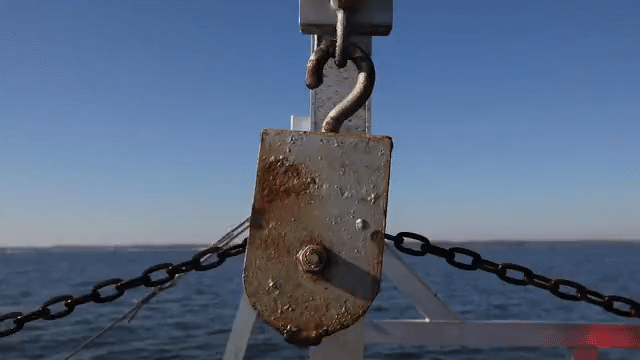
♦ Releasing the dredge.
At only 26 degrees on a quiet January morning in 2020, a pile of piping-hot summer crabs feels like another lifetime. Frost covers the deck of the Mydra Ann, a 45-foot deadrise workboat run by lifelong waterman Roger Morris, as its hull pushes through the icy narrows of Tilghman Island out toward the open bay.
Using GPS coordinates, the men monitor 750 sites, dropping the iron dredge off the boat’s stern into the deep, dark water below, its heavy chain unrolling with a manic whirr. For exactly one minute, at a speed of three knots, Morris then drags the machinery along the bay bottom before hauling up its findings, which on a good run should include even a handful of slow-moving crabs.
“Roger likes to brag he’s never been shut out,” says Miller, bundled up in a black cap and two sweatshirts, shooting the captain a sly grin.
Each specimen is examined for gender, size, weight, and missing appendages, alongside measurements of water temperature, salinity, and depth—data that will then be analyzed to assess the sustainability of the natural resource.
Because even though the fishery is technically not being overfished, according to the most recent surveys, sometimes the scales can tip, and fast.
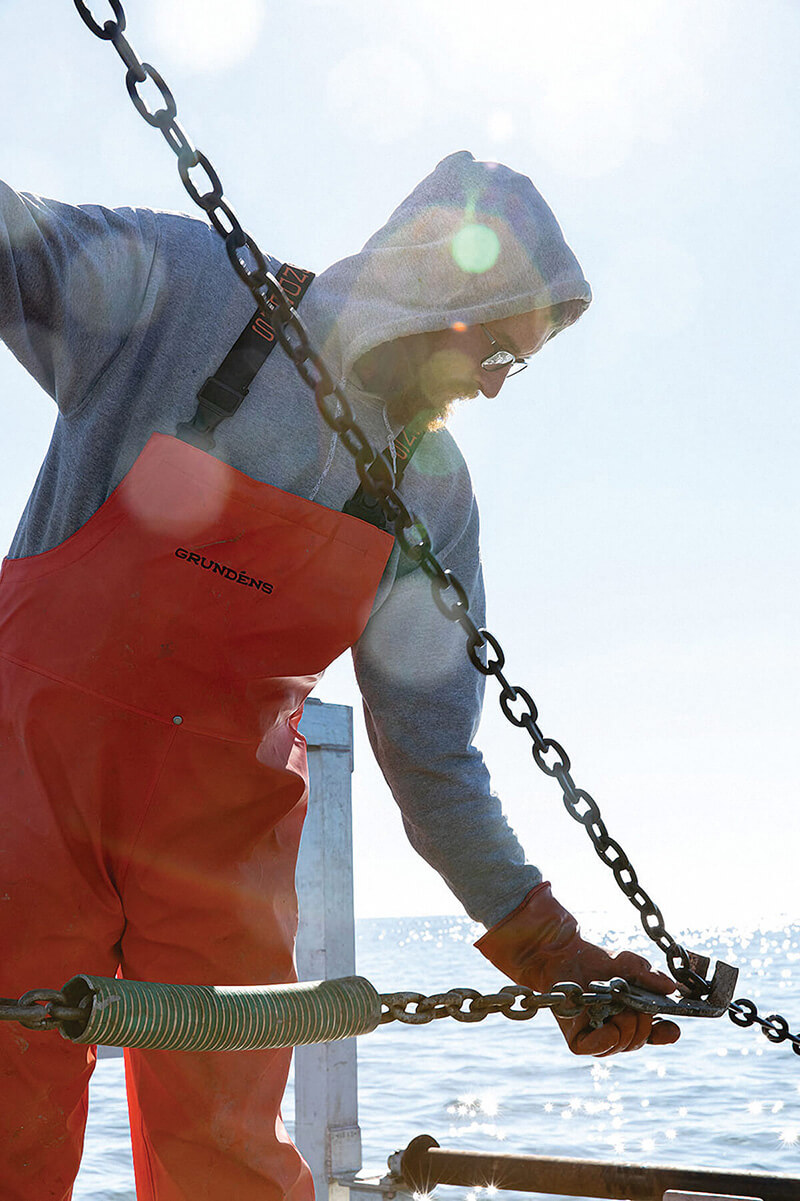
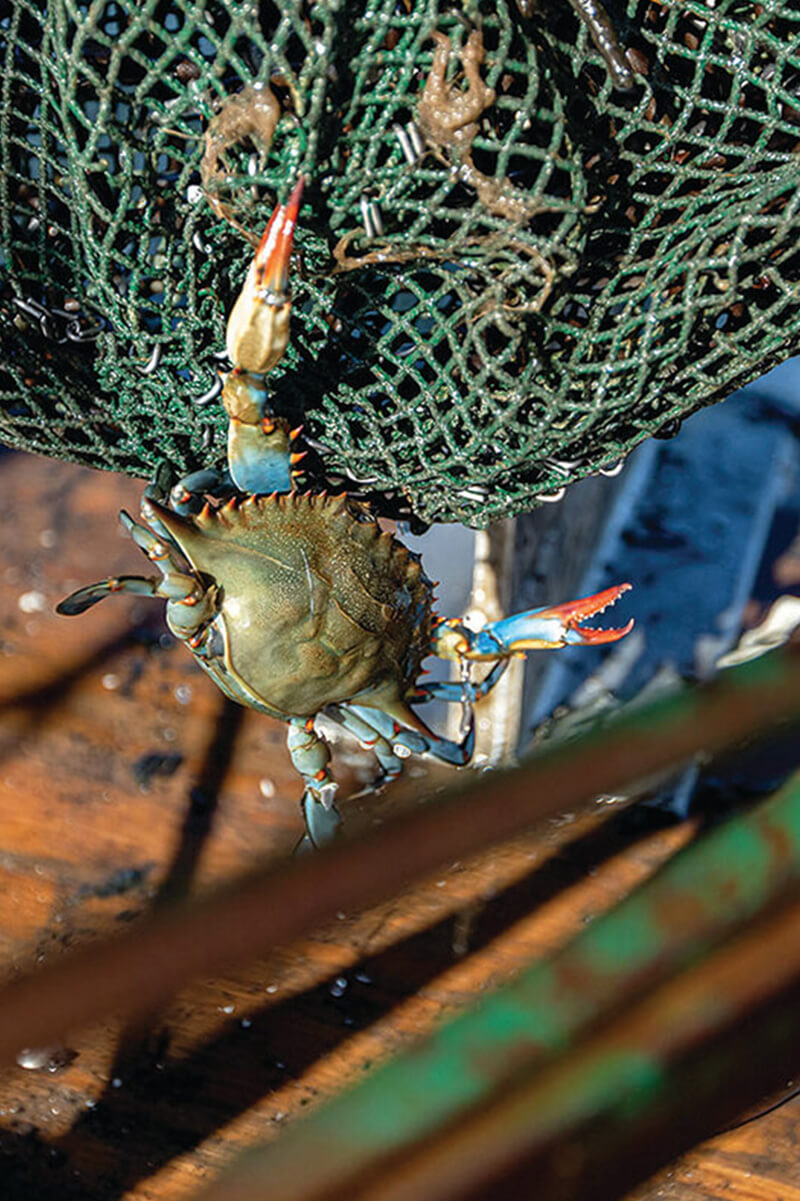
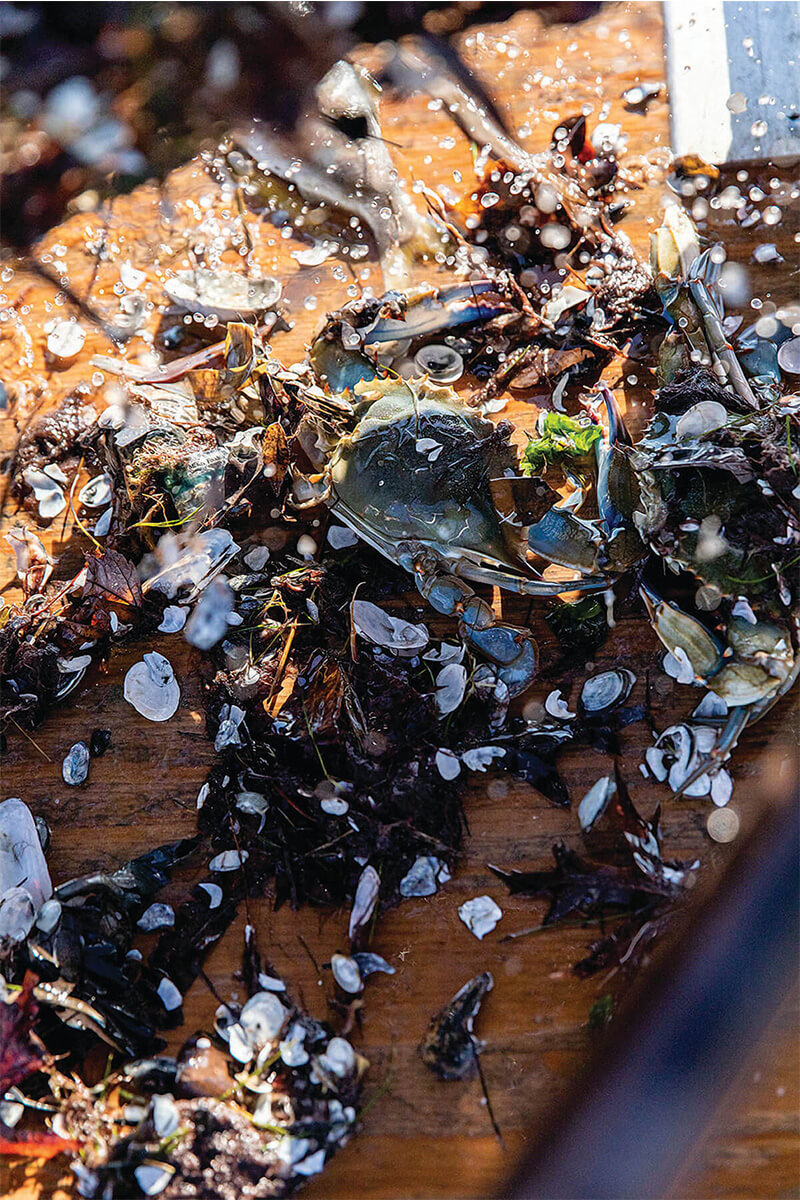
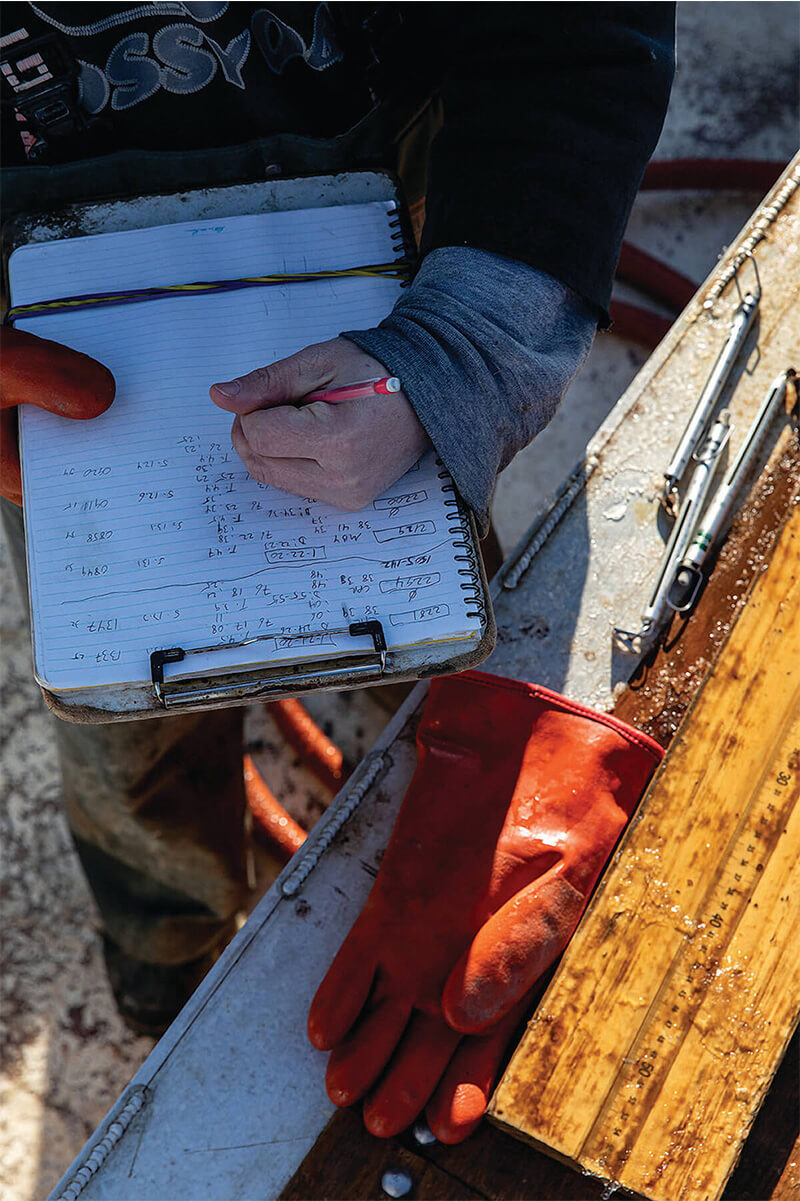
♦ Securing the dredge; a female blue crab, spotted by the "nail polish" on her pincers; recording data; a mixed survey haul.
In 2008, the Chesapeake Bay blue crab fishery was declared a national disaster after the worst harvest since records began in the 1940s, following a decade of decline. To avoid complete collapse, restrictions were imposed on the female harvest, including commercial bushel limits in Maryland and an eliminated winter season in Virginia, after which populations rebounded quickly, though some would argue not enough. Following this winter’s mixed results, no major management changes were recommended by the Chesapeake Bay Stock Assessment Committee, whose annual report would be released in early July.
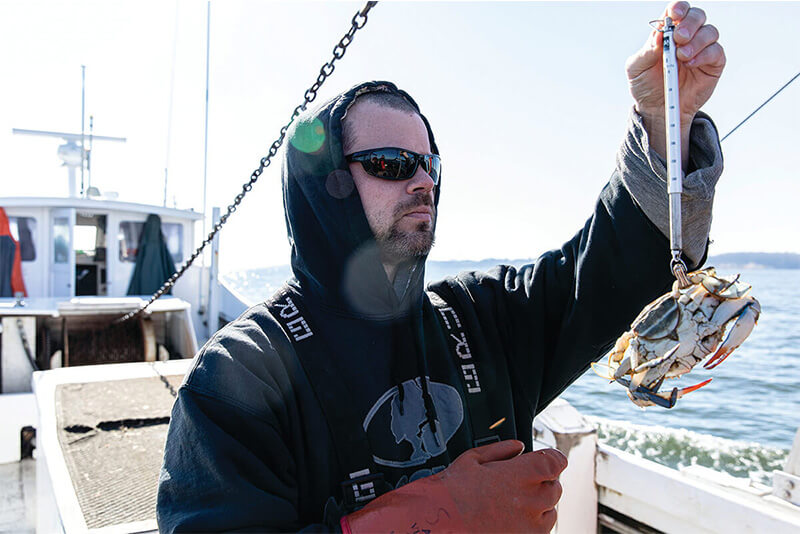
♦ DNR biologist Shaun Miller weighs
a female crab during the winter dredge survey,
January 2020.
At that point, Morris, 58, was back to work, the cold long gone as he set his nearly 1,000 crab pots around the waters of Smith Island, near the Virginia line. Having spent decades commercially dredging crabs—a practice now prohibited in Maryland—the fifth-generation waterman not only provides an invaluable skillset for the biologists, but also gives credibility to the science for his fellow watermen.
“There’s no one who wants to catch crabs more than Roger,” says Heather Brown, DNR natural resources manager, who also helps out on the survey. “We’re lucky to have him.”
That rapport is somewhat of a rarity on these waters, where watermen have historically, notoriously, been at odds with the DNR. In fact, it was only 2017 when the department’s veteran crab program manager Brenda Davis was fired without explanation, just days after Governor Hogan met with a few vocal watermen who wanted regulations eased on smaller crabs. (One year after publicly voicing disagreement with her dismissal, Rice, then chairman of the Tidal Fisheries Advisory Commission, was also not reappointed to his position.)
“I used to catch flack, but now it’s not so bad,” says Morris. “Most watermen believe in what I’m doing.”
He remembers the industry before it got so big—big boats, big engines, not to mention big expenses. Bait, fuel, crew, equipment, maintenance, with a pot costing Morris less than 10 bucks in 1981; now they’re more than $50. He wonders if that’s why young people aren’t working the water the way they used to, with the average age of his industry colleagues said to be approaching senior citizenship. Others say it’s a change in work ethic.
“You’re not going to get rich, like working for the state,” says Morris, tilting a smirk back at Miller. “But if you work hard, you’ll make a living at it.”
And that he does, rising before dark, returning home in time for dinner, driving his crabs some 30 miles north each afternoon to J.M. Clayton, while dreaming of retiring to the old way—trotlining— which is the practice of catching crabs on a string of bait bags along the creek and river bottoms.
“That’s what the water does to you,” says Morris. “When you’re young, you’re on your own, you’re making money—how could you beat it? I went to college for one year, and it was a waste of time. Of course, as you get older, you get aches and pains. But I still get excited in the springtime. You always think you’ll do real good.”
“that’s what the water does to you. When you're young—how could you be at it?... But I still get excited in the springtime. You always think you’ll do real good.”
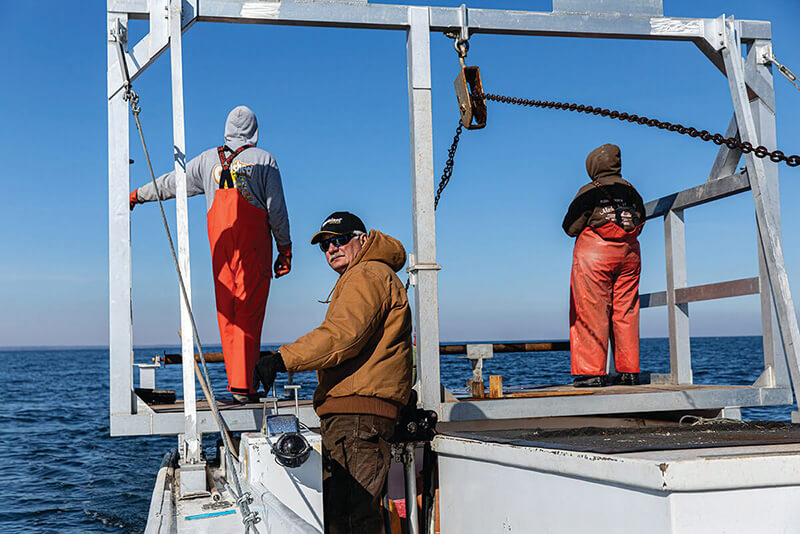
♦ Captain Roger Morris, center,
steers his deadrise out past Tilghman Island.
n the eve of June, workboats once again begin to dot the waters of the Chesapeake, where Memorial Day marks the unofficial start of summer, and with it comes the year’s first real push for crab in Maryland.
Soft shells arrived a week ago, with the full-moon tide ushering in the inaugural “peeler run,” and soon enough, the hard crabs should follow—first as a trickle, then, hopefully, a flood, rising from the bottom ready to molt and mate through summer—with some likely ending up in the pots of Tony Conrad.
“It’s been known to change in the blink of an eye,” says the 46-year-old first-generation crabber and owner of Conrad’s, a mini empire of crab houses and seafood markets between Parkville and Bel Air. “It’s one of the mysteries of the fishery.”
He was out there looking for them at the start of the holiday weekend, just south of Pooles Island, across from Middle River, before the arrival of afternoon thunderstorms. Even with winds whipping up white caps on the water, his 900 pots still hauled in 10 bushels, to be combined with those caught by other local watermen, plus a few extra shipped in from the Gulf of Mexico—all likely to be devoured within hours by the hungry throngs in Baltimore. Because if there’s one thing that can be counted on, it’s that Marylanders will eat every last crab that he can catch.
Which raises an important question. For a species that exists in nearly every eastern water of the western hemisphere, even recently crossing the Atlantic to invade the likes of Spain and Ireland, what makes the blue crab such a part of this particular place?
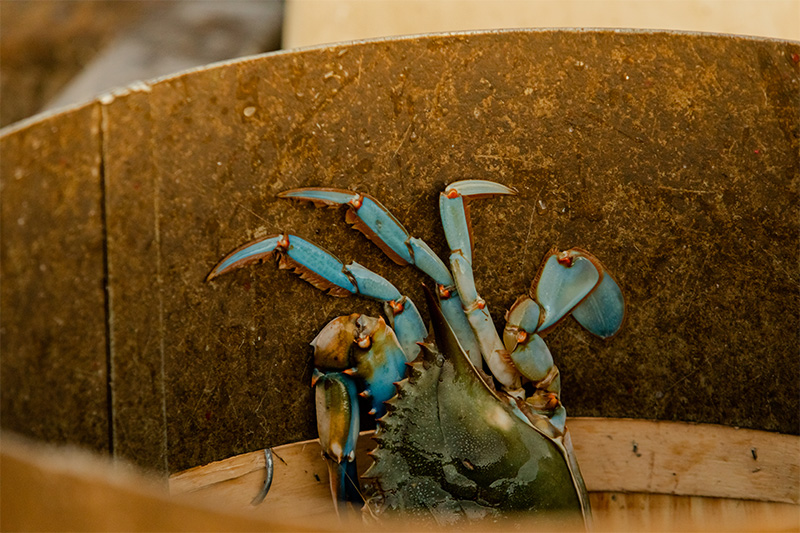
♦ That trademark blue.
“Have you ever eaten one here? Then you know the answer,” says Conrad, before waxing rhapsodic about the state’s classic crab feasts. “They’re fun. They’re social. You can’t just have one. You keep eating until your fingers get tired, or the seasoning burns your lips, or you run out of beer, or there aren’t any crabs left. I have two bushels in the back of my truck as we speak.”
Up the road in Baltimore City, Dayme Hahn, fourth-generation owner of Faidley Seafood in Lexington Market, points to something more specific.
“One of the things that makes Maryland crab so special is its fat, its flavor,” says Hahn, with the crustacean bulking up for winter here in ways they don’t in warmer waters. “At 85 years old, my mom has gone through literally millions of cans of crab meat, and we can tell where it comes from just by opening the lid.”
“you keep eating until your fingers get tired, or the seasoning burns your lips, or you run out of beer, or there aren’t any crabs left to eat.”

♦ Fast and furious.
If anyone knows Maryland crab, it’s the folks at this veteran fishmonger, circa 1886, which makes what has become widely accepted as the best crab cake in the city and state. In 2021, it’s still the dish that draws tourists downtown, that leaves locals lingering over their lunch hour, and that helps move 350 to 1,000 pounds of meat each week, with at least 10 crabs required to make just one of their famous jumbo lump specials.
“This is the largest estuary in the United States, one of the largest in the world, and our crabs are extraordinary because of it,” says Hahn. “It has to do with the mix of that sweet brackish water”—where river and ocean meet—“which influences the entire food chain.”
Beneath hand-painted signs that hawk a historical array of Chesapeake delicacies, from oysters to shad roe to muskrat, in a place that once sold far more terrapin than blue crab, Hahn’s family has ridden the waves of the local seafood industry. The spring’s slow start meant less Maryland crab at the beginning of the busy season, while hard-up picking houses continue to impact her prices, if she can get the meat in the first place—a real concern this year. She worries about what might happen long-term, with each moving part being a vital link in the tradition, all so quintessentially Chesapeake.
“People have no clue how difficult it is to get these crabs from water to table,” she says, knowingly, as her high-tops are typically packed with all walks of life, from across Baltimore and around the world, who have come here for one thing, and one thing only.
“They are such an important part of who we are— they’re more than a state symbol, they’re a state staple, like beef to Texas or wheat to Kansas,” she continues. “We put it on everything in Maryland . . . But we have to pay attention to it, we have to protect it, to make sure it’s here forever.”
